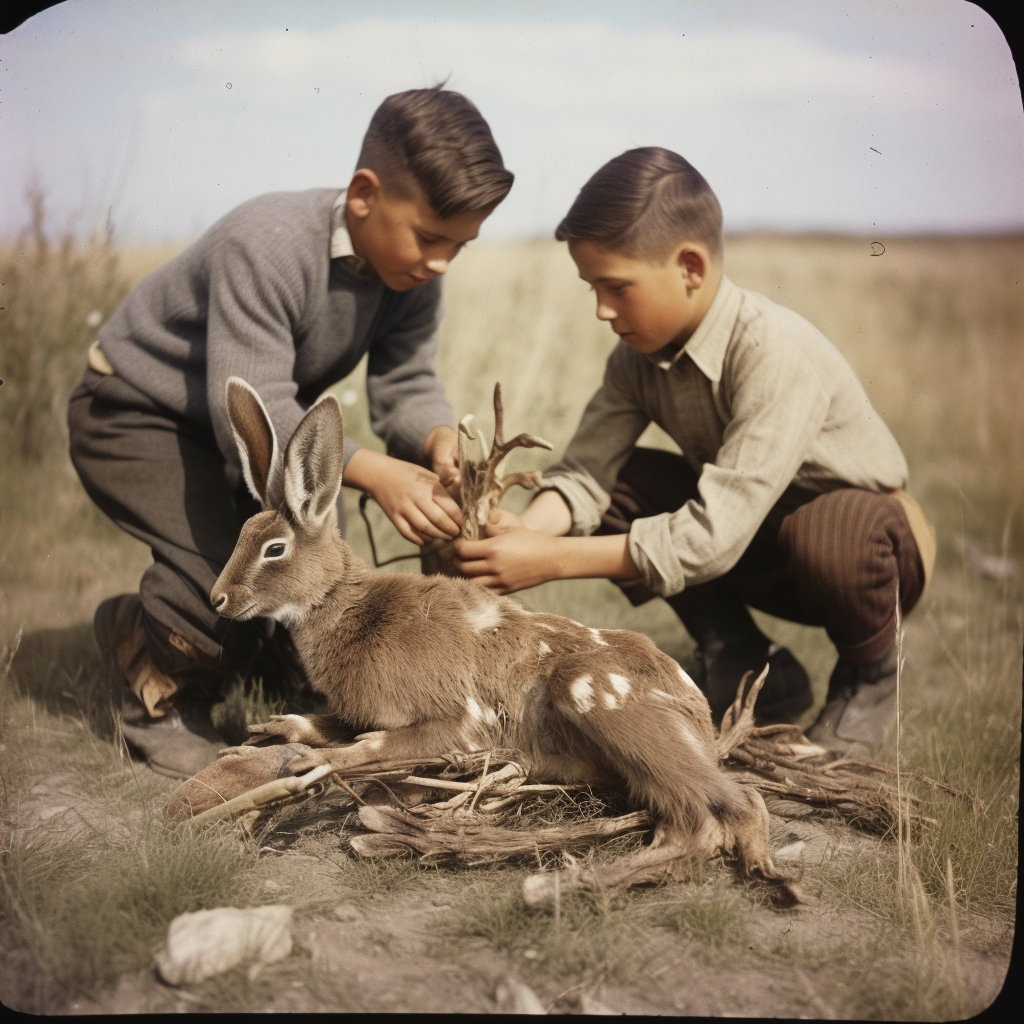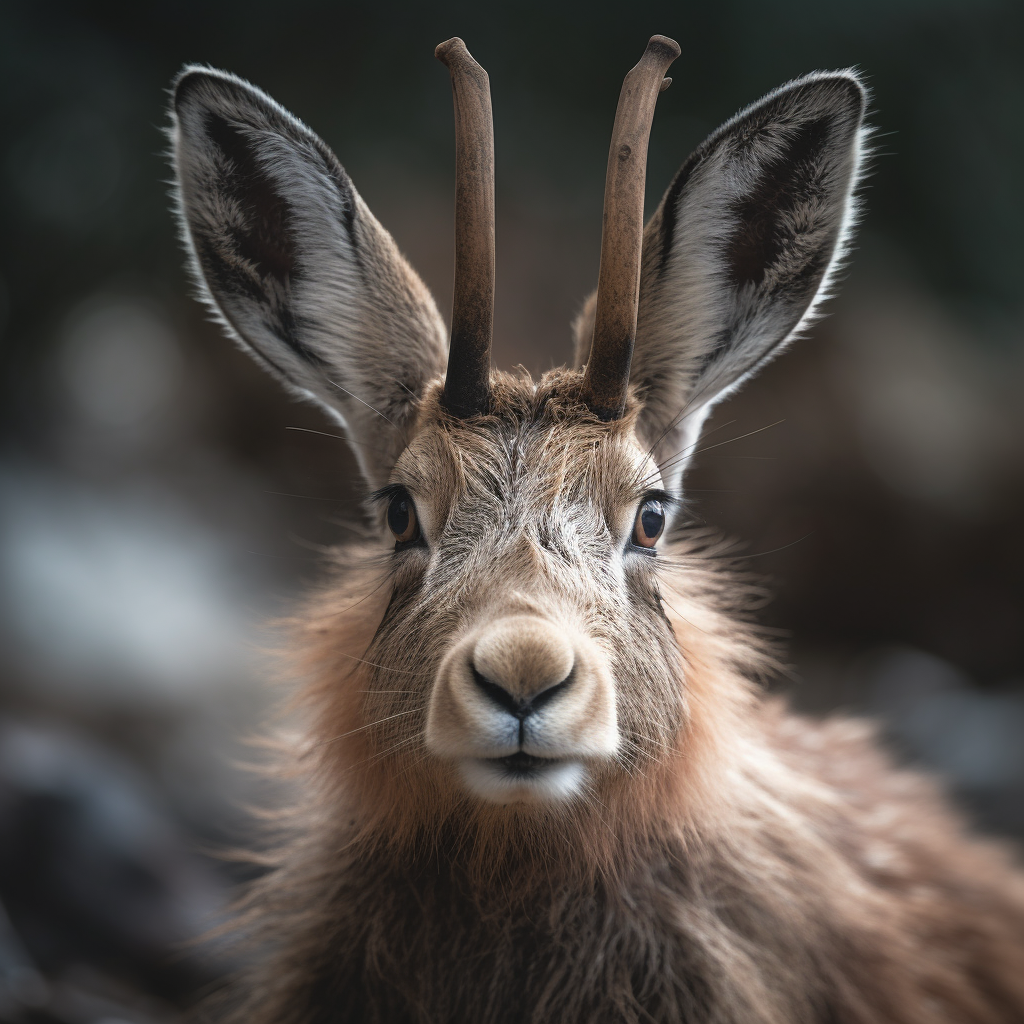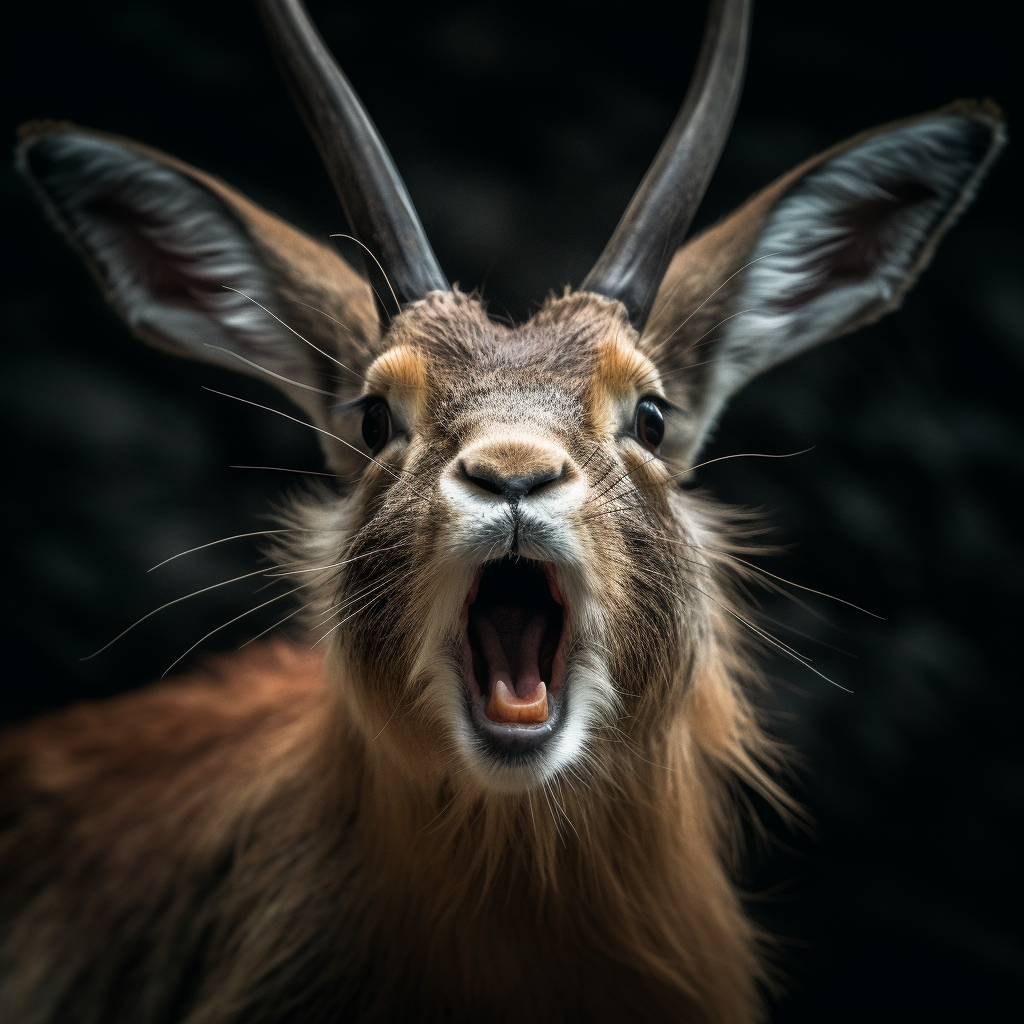The Jackalope, a mythical creature with the body of a jackrabbit and the antlers of an antelope, has captured the imagination of many since its first alleged sighting in the 19th century.
This fascinating creature continues to be a famous cultural icon in the American West, adorning everything from postcards to souvenirs.
But is there any truth behind the legend of the horned rabbit?
The origins of the Jackalope myth can be traced back to the 1930s in the town of Douglas, Wyoming.
Taxidermists and brothers Douglas and Ralph Herrick are credited with popularizing the idea of the Jackalope by grafting deer antlers onto a stuffed jackrabbit’s head, creating an intriguing and mysterious creature.
Sightings have since been reported across the United States and even as far afield as 16th-century paintings, though their existence remains unproven.
It’s worth noting that while the Jackalope remains a mythical creature, it continues to have a powerful grip on the imagination.
From roadside attractions in small towns to artistic depictions in various forms of media, the legend of the Jackalope lives on, and a desire to explore the mysteries and lore that surround this intriguing animal endures.
History and Mythology
Origin of the Jackalope Legend
The Jackalope is a legendary cryptid from North American folklore, particularly in the American West.
This mythical creature is described as a jackrabbit with antelope horns, giving it a unique and fascinating appearance.
The term “jackalope” is a combination of “jackrabbit” and “antelope,” reflecting the creature’s hybrid nature.
The modern Jackalope legend is believed to have originated in the 1930s in Wyoming when two teenage brothers named Douglas and Ralph Herrick created the first mounted Jackalope by grafting deer antlers onto a stuffed jackrabbit.
They sold their creation to a local hotel owner, sparking interest in this strange creature and popularizing the Jackalope as an icon of tall tales and folklore throughout North America.
Similar Mythical Creatures
While the Jackalope may seem unique to North American folklore, there are other similar legendary creatures found in various mythologies around the world. Some of these mythical hybrids include:
- Wolpertinger: A creature from German folklore, the Wolpertinger has the body of a hare and the antlers or horns of a deer, similar to the Jackalope. However, it also features additional characteristics, such as wings, fangs, and a long, bushy tail.
- Skvader: This Swedish mythical creature combines the features of a hare and a grouse or other bird species. Like the Jackalope, it showcases an intriguing blend of terrestrial and aerial creature elements.
- Lepus Cornutus: Also known as the “Horned Hare,” this creature has been depicted in medieval European art and literature. It bears a striking resemblance to the Jackalope, with antlers or horns atop a hare’s body.
These mythical creatures, like the Jackalope, represent an intriguing fusion of familiar animals and serve to capture the imagination of those who come across their tales.
It’s interesting to see how such legendary creatures have emerged independently in various regions, reinforcing the universal appeal of blending familiar elements into something more fantastic and mysterious.
Physical Description and Characteristics
The uniqueness of the jackalope lies in its unusual physical features and characteristics.
Body of a Jackrabbit
The jackalope has the body of a jackrabbit, which provides it with agility and speed.
The rabbit-like features include long legs, large ears, and a fluffy tail. These characteristics enable the jackalope to efficiently adapt to its various environments, particularly the shortgrass plains in certain parts of North America like the Midwest and Western regions.
Generally, the jackalope’s body structure and size are similar to those of jackrabbits and cottontail rabbits.
Horns of an Antelope
One of the most striking features of a jackalope is its antelope-like horns.
The horns are usually depicted as those of a deer with multiple branches rather than the simpler antlers of pronghorns and African antelopes.
These horns are what set the jackalope apart from ordinary rabbits and hares, adding a touch of mystique to their appearance.
The fact that the jackalope has antlers instead of the more common rabbit appearance makes it visually stand out as a creature of folklore.
In conclusion, the jackalope is a fascinating mythical creature, combining the agile and speedy body of a jackrabbit with the majestic horns of an antelope.
This unique blend of features has made the jackalope a popular figure in North American folklore and an interesting subject for enthusiasts of mythical creatures.
Jackalope Sightings and Stories

Douglas Herrick and Taxidermy
As mentioned above, jackalope sightings and stories gained popularity in the 1930s, mainly due to the work of Douglas Herrick, a Wyoming resident, and his brother.
These skilled hunters and taxidermists created the first mounted jackalope by grafting deer antlers onto a hare’s carcass.
Their creation quickly became a popular souvenir, and soon after, people reported spotting these unique creatures across the country.
The town of Douglas, Wyoming, is now considered a focal point for jackalope lore, and many visitors flock there hoping to catch a glimpse of the mythical creature.
Famous Jackalope Encounters
Despite their rarity, there have been some notable jackalope encounters:
- In 1829, trapper Roy Ball caught what was believed to be the first American jackalope
- Various stories originating from the early 1800s claim the jackalope can sing, lending a musical air to its mystique
The jackalope’s elusive nature adds to its appeal, as nocturnal sightings are the most common.
These horned rabbits seem to thrive in the shortgrass plains of the greater Niobrara County area, as well as the sagebrush basins of central and southwest Wyoming.
While the Douglas Herrick brothers continue to leave a lasting impression with their taxidermy jackalope trophies, stories of the mysterious creature endure.
People still delight in sharing their fascinating jaw-like encounters and speculating on the existence of this mythical beast.
Modern Jackalope Culture

Jackalope Hunting License
The idea of jackalope hunting has become a popular tongue-in-cheek activity among enthusiasts of this mythical creature.
Some states even issue playful jackalope hunting licenses that allow for a fun and fictional hunting experience.
These licenses typically come with specific rules and guidelines for the “hunt,” making it an exciting and entertaining pastime for both locals and tourists alike.
Douglas, Wyoming, and Jackalope Day
Douglas, Wyoming holds a special place in the jackalope’s lore as the “Jackalope Capital of the World.”
In this small town, you can find a large fiberglass jackalope on display in the town square, capturing the curiosity and amusement of all who pass by.
Douglas also celebrates an annual event called Jackalope Day in honor of this mythical creature.
This event features fun-filled activities, music, food, and various jackalope-themed events for locals and visitors to enjoy.
Merchandise and Souvenirs
The jackalope has grown into a recognizable symbol of American folklore, leading to an array of merchandise and souvenirs featuring the quirky creature.
Some popular items include:
- Jackalope taxidermy mounts, prepared using deer antlers and a rabbit’s body
- T-shirts and clothing displaying jackalopes in amusing poses and settings
- Jackalope figurines and artwork, showcasing the creature’s unique design
- Jackalope-themed novelties, such as keychains, bumper stickers, and posters
Incorporating this mythical creature into modern culture allowed people to revel in the whimsy and humor surrounding the jackalope folklore.
Engaging with the legend through hunting licenses, annual celebrations, and collectible items ensures that generations of Americans can continue to appreciate and share the tale of the jackalope.
The Curious Science Behind the Myth
Shope Papillomavirus
Although the existence of such a mythical creature might seem farfetched, there is a fascinating scientific explanation behind this myth.
The primary culprit is a virus called the Shope papillomavirus, which is responsible for causing horn-like growths in rabbits.
The Shope papillomavirus is a type of cancer that affects rabbits, resulting in the formation of tumors on their bodies.
These tumors are made up of a protein called keratin, which is the same substance that forms human hair and nails.
When a rabbit is infected with this virus, it can develop antler-like protrusions from the keratin-based tumors, giving it the appearance of a Jackalope.
The Shope papillomavirus was discovered in the 1930s by Richard Shope, a virologist researching these unusual growths.
Shope’s groundbreaking discovery provided a scientific explanation for the widespread folktales and legends of horned rabbits.
Horned Rabbits in Historical Art
Another factor that potentially contributed to the general belief in the existence of the Jackalope is the presence of horned rabbits in historical art.
Such illustrations and sculptures date back centuries and depict rabbits adorned with antler-like horns.
These artistic representations of horned rabbits might have served as further inspiration for the myth of the Jackalope.
While the Shope papillomavirus offered a scientific explanation for physical evidence of horned rabbits, these artistic creations sustained the fascination surrounding the mysterious Jackalope.
The combination of a rare scientific condition and historical artwork has given life to the popular legend of the Jackalope.
By understanding the science behind the myth, we can appreciate the seemingly magical world where fact and folklore intersect.
Final Thoughts
Over the years, the Jackalope has also found its way into popular culture, with appearances ranging from television shows like The Masked Singer to various consumer products.
This ongoing fascination with the creature speaks to its power as a symbol and the way it resonates with a wide variety of individuals.
While the physical existence of the Jackalope remains up for debate, its impact on culture and folklore is undeniable.
This charismatic creature provides a rich source of inspiration for storytellers and artists alike, and its iconic blend of the familiar and the fantastical ensures that it won’t soon be forgotten.

